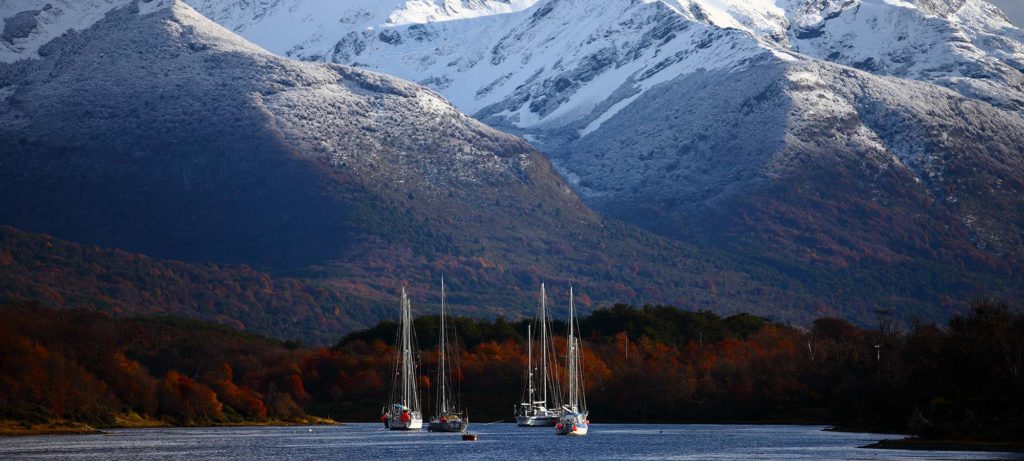
When I was a young girl, the Cape Horn archipelago always brought to my mind historic tall-ship voyages made with bravado by explorers like Cook, Drake, Darwin and Magellan. I often imagined this faraway location to be an inhospitable landscape where elements of nature were harsh and raw.
My husband, James Burwick, and I believe it’s important to give our three children an understanding of life in the wilderness. This is a big reason why sailing offshore has worked so well for us as a family. Over the years, during our land-based adventures in the austral regions of South America, we often dreamed of exploring by boat the channels and fjords of Chile with our children. Our only problem was not having the right cruising vessel.
Anasazi Girl, a Finot-Conq Open 40, is set up for making solo, port-to-port, long-distance passages. With a full carbon-fiber hull, carbon-Nomex deck, fixed deep keel, watertight compartments, rotating wing and stripped-out interior, she is most suited for Southern Ocean sailing. We have a life raft and an emergency anchoring system, but no dinghy. Since we are not geared up for coastal cruising, we make passages that the boat is designed to do: nonstop voyages with legs averaging 6,000 nautical miles. In port, we tie to deep berths where we can live aboard at the dock. We then spend between four and 12 months in each harbor. This gives us time to work, maintain the boat, experience local culture and, most importantly, form connections and personal friendships. Due to our limitations for coastal cruising, when we departed Auckland, New Zealand, in February 2014, we were headed eastbound and nonstop for Lorient, France.
We had no intentions of stopping in Chile. However, on Day 21 of our passage, Anasazi Girl was knocked down and dismasted 300 nautical miles west of the Diego Ramirez Islands. Our family was safe, but we found ourselves shipwrecked on Chile’s Navarino Island, with Anasazi Girl’s rig left behind at the bottom of the great big blue.
For the last two years, Navarino Island has become home for our family of five. We have been living aboard, rafted to expedition boats at the Micalvi Yacht Club and working to earn the funds needed to repair our vessel. During this period we organized a replacement mast, applied for and received temporary residency and work visas for Chile, formed a Chilean LLC (Anasazi Ltda.) and conceived our fourth child (due to be born just as this story goes to print).
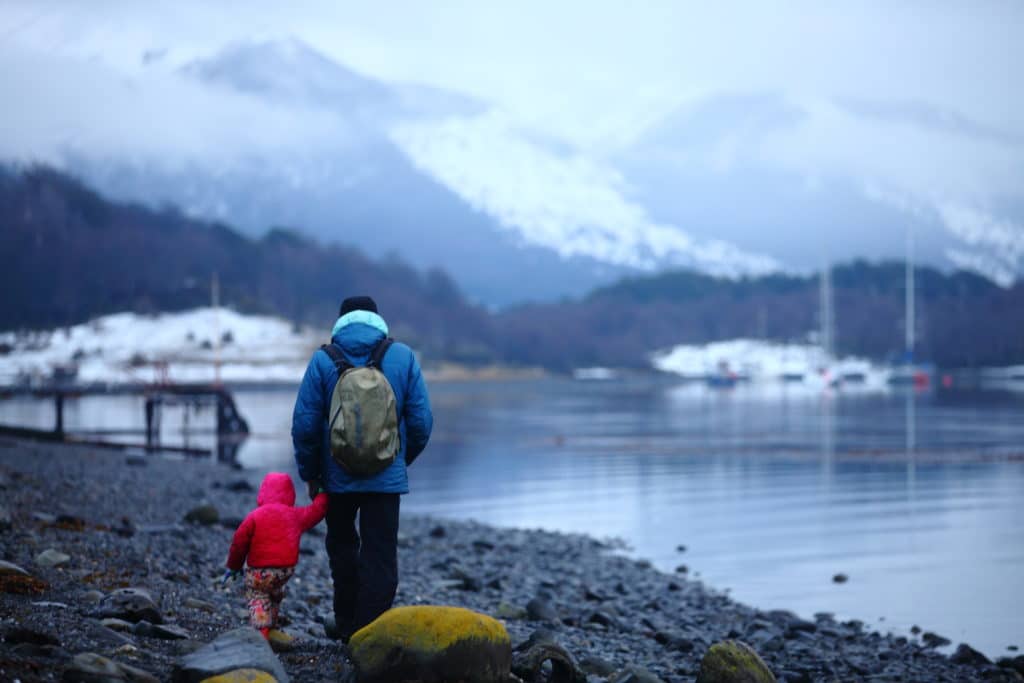
Situated on the north side of Navarino Island on the south shore of the Beagle Channel, Puerto Williams has become a regular port of call for sailors. Its strategic location has made it a hub for most expeditions bound to and from Antarctica, Cape Horn, the Route of Glaciers, Ushuaia, South Georgia and the Falklands.
The weather here is dynamic, but there are two very well-protected natural inlets (called senos) off of the Beagle Channel, Seno Micalvi and Seno Lauta, where boats tie up. To the south of Anasazi Girl’s berth on Seno Micalvi are the beautiful toothlike pinnacles of the Dientes de Navarino mountain range. To the north, you can see Seno Lauta, where boats are moored and anchored, the Beagle Channel, and Argentina’s Martial Mountains. This provides a stunning and dramatic backdrop in all four seasons.
For most sailors, Puerto Williams is just a temporary stopping point between sailing trips to pick up crew, fuel up, connect to the Internet, obtain zarpes or do basic in-port maintenance. Only a few voyagers have “lived” here year-round as we have, though over the years several have taken up residence in the town of Puerto Williams.
We feel very fortunate to be shipwrecked here, of all the places in the world. Navarino Island has proven to be a true paradise for our small children, Tormentina, 7, Raivo, 5, and Pearl, 3. The beauty of being here is that it’s remote enough to be pristine, but not isolated enough that you feel completely desperate or cut off from the rest of the world.
The location fulfills many basic but very important qualities we want for life with our family: clean air, water and land; abundant nature and outdoor recreation; a low population density and crime rate; a pedestrian-friendly lifestyle; immersion in a foreign language; and exposure to a unique culture.
The island is part of the Cape Horn Biosphere Reserve, named by UNESCO in 2005 as one of the 37 most pristine ecoregions in the world. My children have the opportunity to play in subpolar, Magellanic forests filled with evergreen and coigüe (Magellan’s beech), lenga (high deciduous beech), ñirre (antarctic beech), notro (Chilean firetree) and canelo (winter’s bark).
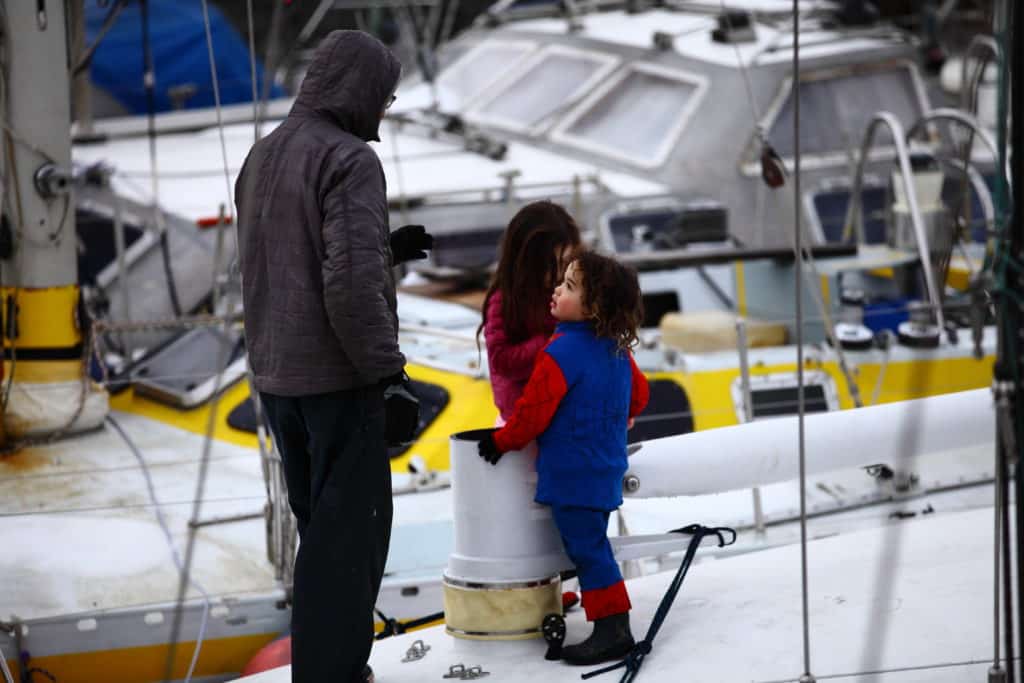
We are immersed in a landscape steeped in the incredible presence of the indigenous Yagán tribe. The last remaining Yagáns (formerly settled on the island at Bahía Mejillones) now live in a district of Puerto Williams called Villa Ukika. My kids visit the homes of local Yagán artists to see what they are crafting, and my oldest goes to school with Yagán descendants.
We are reminded of the impact of invasive species on the island: wild horses, mink, beaver, stray dogs and yellow jackets. Every once in a while a mink or beaver will swim stealthily through the calm waters of the inlet. We have watched the wild horse population multiply as new foals and fillies are born before our eyes. It is an incredible opportunity for us to discuss with our children the fragile balance of this life.
Sea life is abundant. Whales and seals swim in the channel. The local fishermen give my children gifts of róbalo (Patagonian blenny), centolla *(southern king crab), *erizos (sea urchins) and pulpo (octopus). Jellyfish and small fish swim up to the water’s surface alongside the boat. Teeming in the sand, mud, tide pools and under rocks are countless invertebrates. The constant tidal rise and fall of the waterways produces fresh troves of starfish, urchins, mussels, clams, limpets, chitons and centolla (both live and empty shells).
Most coveted of the objects to be discovered on the shore or in the forest are rarely found Andean condor feathers, which can span up to 3 feet long — taller than my youngest daughter, Pearl! Seeing the kids play among the island’s sun-bleached whalebones also gives us a new perspective on our size and place in the world.
A wide network of walking paths through forests, wetlands and sphagnum peat bogs is easily navigable by small children. A park along the Rio Ukika is a favorite, providing a nice loop through town, into the magic forest, downriver to its outlet to the sea, and back to the Micalvi along the shore of the Beagle. Only on rare occasions do the kids and I see someone else on our outings.
A new sailing school (Club Escuela Deportes Nauticos Puerto Williams), built by Chilean businessman Nicolas Ibañez Scott, sits on the point between Seno Lauta and Seno Micalvi. The school provides a free opportunity for all youth on the island to learn sailing and participate in national regattas. There are several kayaks, a fleet of Optimist prams, and one keelboat. The waters are protected in the inlets, and it’s very easy to mitigate risk in the cold waters. My kids have found both independence and personal meditation on the water. It is so nice to hear them talking about being in “the zone.”
Cruisers are fortunate on Navarino Island, because here it’s best to have your own boat. All movement in the Chilean waterways is controlled by the Armada, but once boats are out in the channels, there are many beautiful and well-protected anchorages nestled in the dramatic, wild, windblown landscape.
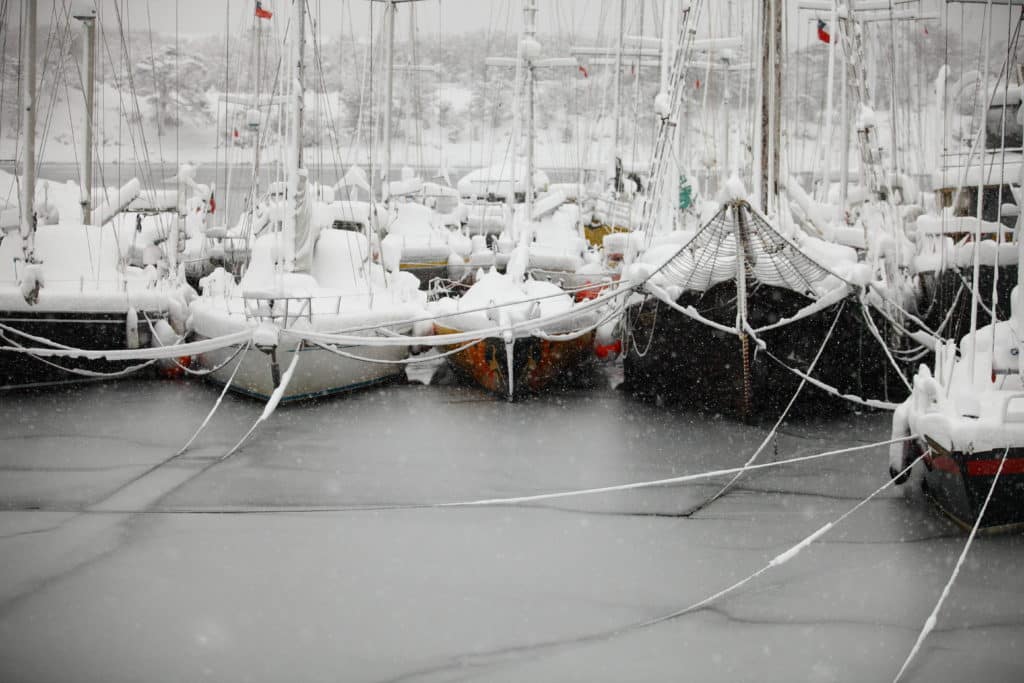
Sailors have a truly secluded playground for sailing, skiing, climbing and scientific expeditions. A very special and remote region along the Beagle is the Cordillera Darwin. In the winter, the snow-covered mountains along the Glacier Route are full of frozen waterfalls ripe for ice-climbing. The Darwin range is part of Yendegaia National Park, a recent 370,000-acre project of the Conservation Land Trust program.
The Micalvi Yacht Club brings in an international scene of sailors: Spanish, Austrian, French, German, Dutch, Chilean, Argentinian, Finnish, Italian, Russian, Romanian, Polish, American, British, Kiwi, Canadian and Australian, just to name a few. Seno Micalvi is often filled with a cacophony of languages across the six fingers of boats rafted together. My oldest daughter has learned how to speak, read and write in Spanish at the local school, and the sailing scene gives all my kids added daily exposure to a multitude of languages.
The peak sailing season is between October and April, with up to 42 sailboats in port at once. Many boats winter over in the extremely well-protected Lauta and Micalvi inlets (25 last year, and close to 30 expected in 2016). Others head north to Puerto Montt, or out of country to Brazil or Uruguay for offseason refits.
There are no chandleries or marine service shops on the island. Hardware stores are sparsely stocked. More supplies are readily available in Ushuaia, Argentina, but it is still a challenge. When it comes to making repairs on an island at the bottom of the planet, patience is the name of the game. The local private yachting industry is extremely small and developing slowly.
Most yachts in the country are foreign-flagged, and there are some services available for these visiting vessels, but they are very limited. In general, Chile’s maritime industry caters mostly to commercial motor vessels. For sailing yachts, careful planning is needed to maintain vessels here in a timely and affordable way.
F or our situation, searching in Chile and Argentina for a replacement rig for our type of boat proved fruitless. Fortunately during our knockdown, Anasazi Girl did what she was designed and built to do — keep us all safe, with only minor damages aside from the very major loss of the broken rig.
Shipping on and off the island is slow and expensive, and missing just one part creates a big hiccup in work progress. For us to repair the rig requires complete organization ahead of time, with all the parts and pieces coming in from outside of the country.
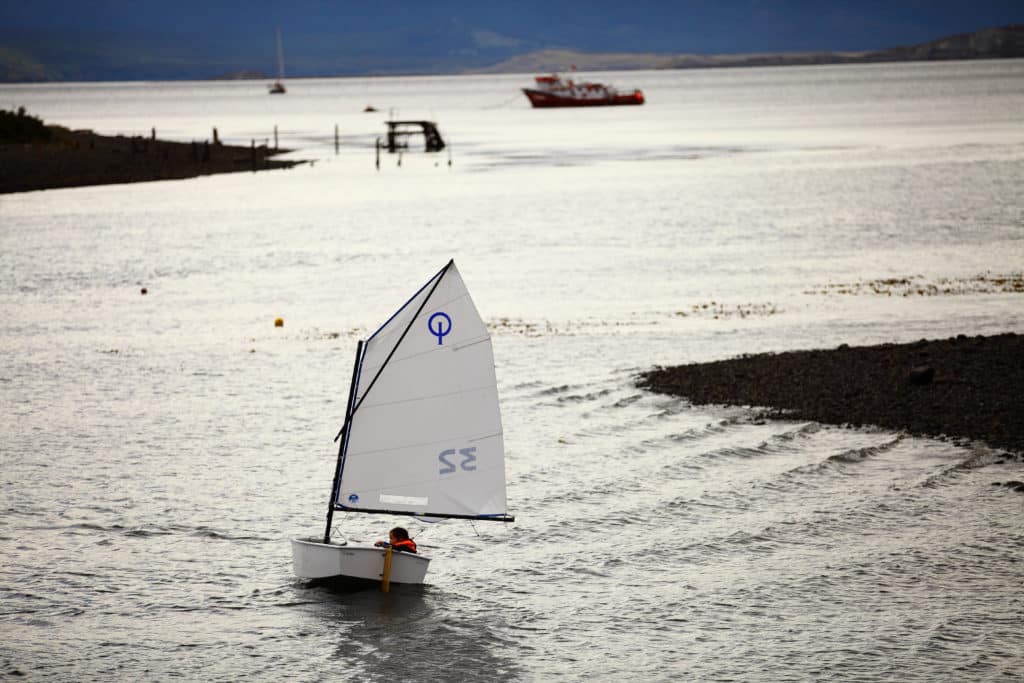
Equivalent replacements for the full carbon wing and racing sails had us digging deep for 100,000 euros, which is well beyond our budget. We don’t have a cruising kitty, a house or another life to go back to. Fortunately for us, although we are poor in pesos, we are rich in friendship. After our dismasting, 48 professionals in the marine industry around the world donated their time and knowledge to help us come up with the safe alternative solution of using a carbon plug to connect the carbon stump that remains on the boat to a new tube section.
Our replacement rig is coming out of Buzz Ballenger’s shop in Watsonville, California. It’s an aluminum section originally shipped from New Zealand to California for a trimaran that was damaged in transit and written off by insurance. The rig will be shorter than our original but will fit Class 40 sails. Michael Hennessy of Dragon Racing donated a used main and headsail to us.
Over the last 24 months, both friends and complete strangers have made small contributions to our mast project, which raised our spirits immensely and kept us afloat during some tough financial lows.
For approximately a third of the original carbon-replacement budget, we plan to step this tube over our carbon stump and use some of our original rigging and headsails. We are currently working to pay off the final balance due on the rig.
After a long two years, freedom from the dock and freedom to finish our family circumnavigation finally feels reachable. Through our marine-service business, we have also created something that gives us the potential for a future here.
Navarino Island has been a surprising gift. Never did I imagine as a child that I would live in this magical place with my own family, or that it would be under such challenging circumstances. Being here has pushed us to another level with patience, problem-solving and creative thinking. This environment — so clean, wild, and full of beauty and nature — has also given my family an incomparably simple and pure life. Our special experiences here will certainly be imprinted strongly in all of our memories.
Professional photographer Somira Sao is currently living with her family on Navarino Island, Chile. To see more of Somira’s work, visit her website www.anasaziracing.blogspot.com.








